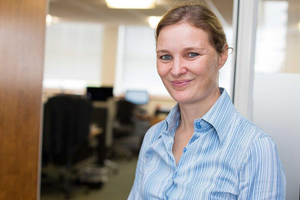PM speech at the Commissioning of HMS Anson: 31 August 2022
Thank you very much Captain Bing.
Deputy Prime Minister, ladies and gentlemen, it is fantastic to be here in Barrow, which is the crucible of British marine engineering, of course, and the historic vast maternity ward of these steel leviathans.
And when you look at HMS Anson ladies and gentlemen you are looking at the climax of eleven years of high precision effort by 10,500, brilliant shipwrights, and sonar experts, and weapons engineers – a concentration of talent and expertise that can be mustered by only two or three other countries in the world, at the most.
And on this special day, we give them our thanks.
And you’re looking, by the way, at a vessel that is five times as long as the chamber of the House of Commons and I think you will agree is an international argument considerably more persuasive than some of the things that are deployed in the chamber.
And this is also as the lady sponsor, as the wonderful lady sponsor pointed out this is the home, the place of work, play and rest for one hundred and ten brave submariners at sea, week in week out in the service of our country and to them in anticipation I think we should give our thanks.
When you’re looking at HMS Anson, you are also looking at a vast UK industrial project that represents all that we mean or certainly all that I mean by levelling up, that’s driving jobs and growth and the acquisition of skills up and down the country, sonar built in Somerset torpedoes built in Portsmouth, propulsion system, I think I might even say from Derby, Rolls Royce in Derby.
And you will know that those Rolls Royce reactors were, which are shortly going to be fired up, I think for the first time, they are the basis of the small modular reactor programme that this government has commissioned as part of our strategy to ensure that the people of this country get reliable supplies from the UK of the energy, affordable energy, that we need.
And I’ve just been informed by the by the brilliant people in BAE that these engines run so quietly, that the most important feature of this machine is that for all its enormous bulk.
And by the way, it’s I think it’s smaller than the dreadnought, but it’s still colossal.
All its bulk, you cannot hear it coming.
And I can tell you that I’ve just been out with the Metropolitan Police this morning on a dawn raid.
Coincidentally, in Lewisham, I think maybe South Norwood.
And I can tell you how important, is the element of surprise.
And we arrested a drug dealer, ladies and gentlemen that he was suddenly surprised to see me at the foot of his bed at 530 in the morning, he seemed remarkably pleased actually.
The element of surprise is crucial. And that is why HMS Anson is so vital for our defence, by leave of the Ministry of Defence and my great friends. The Secretary of State for Defence, I can tell you roughly what this boat does, it doesn’t actually carry the nuclear deterrent itself though it does carry as you know, plenty of other lethal stuff, but it does protect our nuclear deterrent.
And therefore today, ladies and gentlemen, what we are looking at is the policemen of the world, gathering intelligence protecting our sea lanes cruising up behind you silently you do not even know it’s there and invisibly helping to create that forcefield around us that is warding off attack on NATO countries for 80 years or getting on for 80 years keeping safe, a billion people around the world.
That is what this machine does.
And that’s why I’m so pleased, by the way, but under the AUKUS agreements with Australia and with the United States, the technology we hope in the submarine will be used to help keep people safe across the whole of the Pacific region as well.
Now, some people will continue to insist that this is a weapon of war.
I tell you that she is a guarantor of peace.
And in this uncertain world, we need that guarantee more than ever.
I congratulate all those who designed her. All those who built her. And I know that in the decades to come, all those who are going to set to sea in her.
And I know that in decades to come, when she’s out at sea, unseen beneath the surface of the water, keeping us safe, we will all remember the day that we were here in Barrow to see HMS Anson commission.
Thank you, God bless this wonderful submarine and all those who sail in her.

